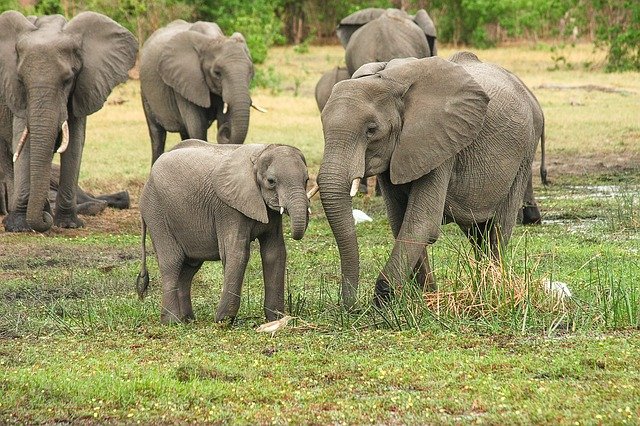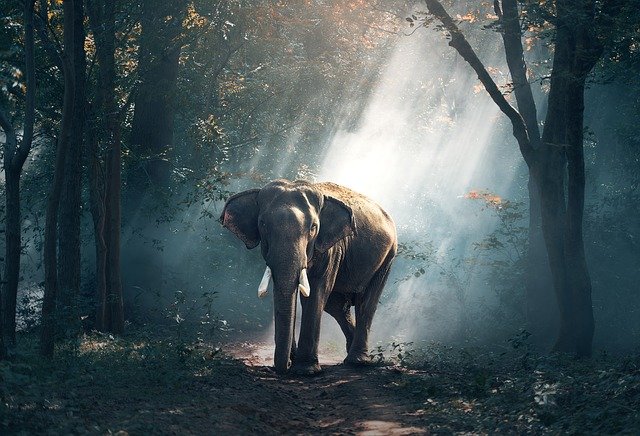Their descendants; the mammoths have remained a fascinating piece of animal history even after they went extinct. The planet’s ecosystem is a world that accommodates humans and creatures of different origins, sizes, habitats, and characteristics; giving every one of them a chance to play their unique role in the environment for their survival and that of others. The activities of every living creature have a way of influencing the well-being of similar or different species in the ecosystem.
Ever heard of keystone species? This term refers to species of living organisms that provide essential ecosystem services which are very necessary for the continued survival of other species in the community. Many organisms belong to this category and the largest on land are the elephants. They are the largest mammals on land and are found across Africa and Asia and several experts across the globe have continued to draw the world’s attention to the fact that we might just lose these broad-eared giants.
The role of elephants in the environment

One of the major roles of elephants in the ecosystem is the provision of food. Yes, they provide food for a variety of species. Elephant dung is a fountain of nutrients for many species; especially insects which also become food for birds. There is an entire network or food chain that exists and survives Elephant dung is a fountain of nutrients for many species; especially insects which also become food for birds. There is an entire network or food chain that exists and survives by feeding on elephant dung. Herbivorous animals that share the same ecosystem space with elephants feed on fallen tree branches, leaves, and twigs left behind as a result of elephant activities.
As pointed out earlier; elephants are keystone species. Factors related to their size, their way of life, and their intelligence have made them stand out and help experts to understand the role they play in the circle of life.
Smaller creatures also gain their shelter from elephants. Some live on them while some create a home from elephant tracks or footprints left in the forests. By cutting off tree parts for food, elephants provide natural pruning and promote the growth of trees.
Elephants are also migratory animals. They are large, heavy, and leave quite an impression on the soil. Their tracks help to create smaller paths for smaller animals, clear up some densely vegetated areas and create room for sunlight to reach plants on the lower forest levels.
Why are elephants endangered?

The two elephant species known to exist are on the verge of extinction. Recent reports say that there are only about 40,000-50,000 Asian elephants left in the whole world. African elephants once roamed the entire continent but studies have shown that they are now limited to a few small areas. The biggest threat to these iconic creatures is human activity. Human activities account for the dangers and harm done to elephants across the world.
Topping the list of concerns is the Illegal wildlife trade. The aggressive poaching of wildlife for their skin, meat, body parts, and other commercial purposes has taken several new dimensions throughout history. Animals considered exotic or those whose body parts fetch some money have faced all manner of cruelty, illegal trading, and massacre. Elephants are hunted for their ivory, and their skin, to serve as forms of entertainment in different ways across the world and for other reasons.
While there are numerous laws, regulations, and sanctions to prevent the illegal hunting and endangering of animals like elephants, illegal activities like poaching, ivory trafficking, and so on continue to increase. Poachers operate under organized and well-funded groups. They constitute the greatest human menace to wildlife and have proven very difficult to control in many countries.
With the growing human population, comes expansion. Encroachment into forest lands for agriculture and expanding human settlements have destroyed forests and forced many elephants to either find new homes or try living with humans. They are viewed by many as pests to crops and dangerous neighbors. In a bid to create more roads, cities, railway tracks, and cities to accommodate more humans, we have also succeeded in messing with paths and patterns for elephant migration which has threatened their survival and placed them in difficult conditions.
Human activities have therefore resulted in the death of countless elephants, and the loss of their natural habitats and have made it nearly impossible for elephants to simply live or exist in modern history.
In summary, the illegal ivory trade is the major driving force behind the aggressive poaching of elephants. We lost mammoths to extinction but there is no reason why we should lose their descendants too. We can save elephants by preserving our natural forests, putting a lasting stop to poaching, and putting an end to the illegal ivory trade.